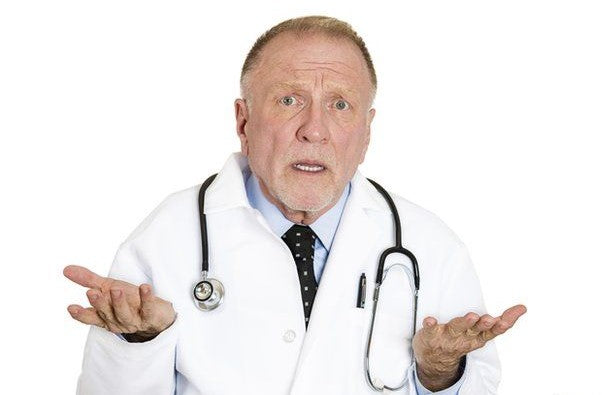I recently went to my 40th high school reunion, and one of the most “telling” moments of the event was looking at our yearbook and seeing how drastically everyone had changed.
It’s one thing to see someone every day and not notice subtle changes over the years, but it’s quite another to look at 40 years ago versus now—it hits you like a ton of bricks!
Well, the same can be said for a health epidemic that has slyly snuck up on us and its rates have exploded over the last several decades!
I’m talking about Type 2 diabetes.
Diabetes prevalence has risen SEVENFOLD (in other words, a 600 percent increase) in the 30-year period from 1983 to 2013.
Although the population also grew during that time, there was only a 34 percent increase in the US population.
Methinks, we have a glaring epidemic on our hands, and we had better start doing something about it.
The grim statistics
Currently, about 35 million Americans have diabetes (with the overwhelming majority of those being Type 2), and another 88 million have elevated blood sugar levels (called prediabetes) and likely don’t know it.
What in the world is going on?
Well, to answer that, you need to understand about blood sugar levels, what diabetes really is, and the many factors that are in the diabetes “mix.”
Too little vs. too much
Glucose is essential for all your body’s cells, especially your brain!
That being said, maintaining proper blood sugar levels is crucial to your health and life, and any variances from “normal” can have devastating consequences.
Blood sugar levels can be considered abnormal in two ways:
Hypoglycemia (too little)
Low blood sugar (hypoglycemia) is a blood sugar value of less than 80.
When your blood sugar plummets to between 60-80, you will feel shaky, jittery, anxious, sweaty, and confused. If it dips further between 40-60, these symptoms become more severe, and under 40 you may slip into a coma and die.
Thankfully, when your sugar level drops below 80, hormones come to the rescue--adrenaline helps make more glucose available to your cells, and glucagon helps convert fat into sugar.
Hyperglycemia (too much)
Elevated blood sugar (hyperglycemia) is a blood sugar value over 110.
Chronically elevated blood sugar can lead to heart disease, kidney disease, retinal degeneration/blindness, neuropathy, pain and burning in the extremities, foot ulcers/gangrene, and a high risk of infections.
Here too your body has a hormonal safety net (insulin) to reduce blood sugar levels…but some people have shortages, plus many others have been pushing the envelope with insulin and are facing diabetes…
Diabetes = hyperglycemia + insulin shortage
Type 1 diabetes is the less common type of diabetes, representing only 5-10 percent of cases.
With Type 1 diabetes, there is a problem with the pancreas, causing inadequate insulin production. Type 1 diabetes is an autoimmune condition; plus it can also result from damage to the pancreas from an injury or illness.
Type 2 diabetes is the form of diabetes that is exploding.
It’s all about supply and demand. Type 2 diabetes occurs when blood sugar levels are repeatedly higher than what your body needs to burn for energy!
This forces your pancreas to have to produce increased insulin to bring your sugar level down, and eventually it may have trouble keeping up with the demand.
Insulin resistance adds a twist to this scenario. After repeatedly being barraged by insulin to absorb the sugar from your bloodstream, eventually your cells “shut their doors” and refuse to take in any more sugar—known as insulin resistance.
Addressing ALL the issues is the key!
To get a handle on Type 2 diabetes, you must address the underlying issues, as well as support your body’s efforts to maintain proper glucose levels!
Here’s how:
Take care of your diet
Our diets are far and away the number one cause of the Type 2 diabetes explosion.
To prevent diabetes, you must avoid sugars, sweets, grains and starches as much as possible.
This also includes beverages—especially soda, sweetened coffee and tea drinks, fruit juices, sports drinks and energy drinks.
Instead concentrate on proteins, healthy fats and non-starchy vegetables (all vegetables except potatoes and corn), and drink plenty of filtered water each day.
Avoid artificial sweeteners
Artificial sweeteners promote obesity by increasing hunger and motivating food consumption beyond satiety. In turn, obesity dramatically increases your risk of Type 2 diabetes.
Balance your microbiome
Insulin resistance has been linked to imbalances in the gut microbiome. High levels of harmful bacteria (dysbiosis) in the gut can trigger a cascade of inflammation, weight gain and insulin resistance.
But a top-notch full-spectrum probiotic formula like Super Shield can help turn that around and support a healthier gut microbiome balance.
Super Shield’s complete blend of 13 potent, well-studied probiotic strains has been helping to create healthier guts all over the world for the last 12 years!
Move it
Regular exercise has been shown to help increase insulin sensitivity in your cells, which is exactly what you need to fight and reverse insulin resistance!
Pick the activity that’s right for you, get your doctor’s OK, put on those sneakers and get going!
Zzzzzzz
Studies suggest lacking sleep can raise stress and blood sugar levels, encouraging insulin resistance.
If you have trouble sleeping, try drinking chamomile tea in the evening (and avoiding caffeine, sugar and alcohol); taking a warm bath with Epsom salts; or taking tryptophan supplements.
Engage the power of turmeric
Research has shown that turmeric can help maintain proper blood sugar levels by increasing insulin secretion by the pancreas and supporting the absorption of glucose out of the bloodstream into the cells.
Let our Optimal Turmeric Blend help support your healthy blood sugar levels! Each 2-capsule dose provides 750 mg of pure organic turmeric plus black pepper extract for increased absorption.
Now you have an effective plan to reduce your risk of becoming part of the diabetes epidemic!
To your health,
Sherry Brescia












Hi! Im wondering what Sherry thinks of collagen powders, supplements, etc. Ive been seeing them all over and sometimes think of trying one.